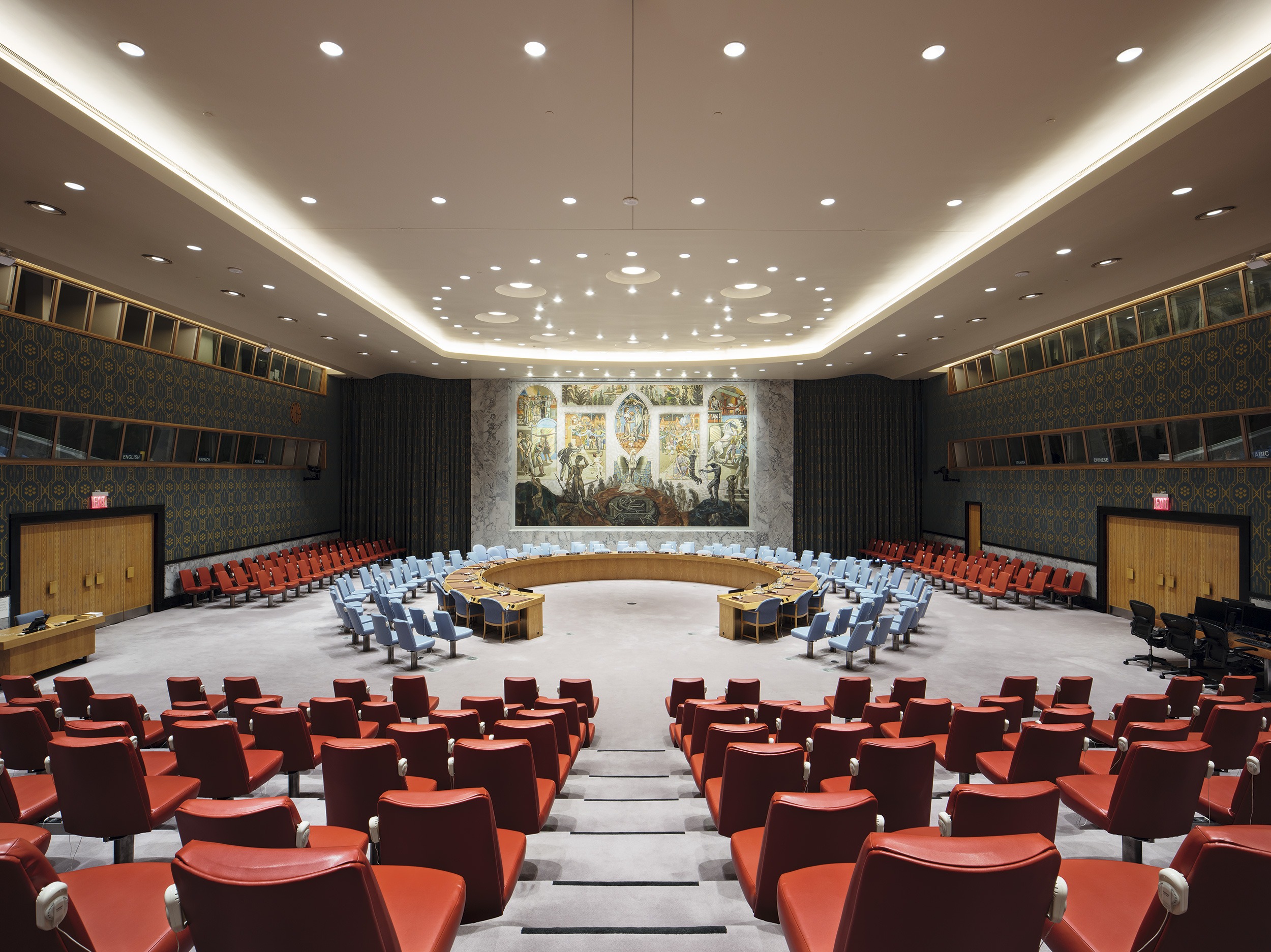Grafill annually presents awards to the most beautifully designed books. During the awards ceremony this week, a book about the UN Security Council’s Chamber received a silver award in the category “Most beautiful non-fiction book of the year 2019”.
The Security Council’s Chamber was completed when the UN opened its new headquarters in Manhattan in 1952. The book “The Security Council’s Chamber” gives a nuanced account of Arnstein Arneberg’s project given to him by Trygve Lie, the UN’s first secretary-general. Together with Else Poulsson and Per Krohg, Arneberg carefully designed the chamber and it has since been referred to as the most important room in the world.
In 2018, The Directorate for Cultural Heritage took the initiative to create this book in order to write about and document the exciting stories that form the backdrop of this historical chamber. The Directorate for Cultural Heritage acted as an adviser in connection with the UN’s extensive restoration of the UN building during the 2000s. Delving deep into historical archives and conducting detective work to obtain original designs were important in order to restore the beautiful chamber to its former glory.
The book was published as a collaboration project between the Directorate for Cultural Heritage, the National Museum-Architecture and Forlaget Press. The book is richly illustrated and includes both archive photos and images from the present chamber. Designer Rune Døli and photographer Ivan Brodey’s efforts proved invaluable regarding the visual results – with good help from the book’s image editor Tone Svinningen.
The Grafill jury explained its distinction by writing the following:
“This is a book that depicts one of history’s most important arenas for discussions and decisions, and it succeeds on all levels. Arneberg’s vision of designing the room with a neutral character is directly mirrored in the book’s choice of design and materials. The uncoated in contrast with the smooth, accompanied by a neutral treatment of typography where the images also receive their deserved attention. The content’s systematisation is simple but cleverly executed. Ivan Brodey’s photographs provide a direct documentary experience that serve as a contrast and an enhancement at the same time, while maintaining an interesting and strong sectioning throughout the book’s chronology.”

